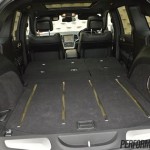How To Fix Scratches On Hard Plastic Car Interior Trims
Hard plastic car interior trims, while durable, are susceptible to scratches from everyday use. Keys, bags, shoes, and even clothing can leave unsightly marks on surfaces like dashboards, door panels, and consoles. Removing or minimizing these scratches can significantly improve the appearance of the vehicle’s interior and potentially increase its resale value. This article details various methods for addressing scratches on hard plastic car interior trims, ranging from simple cleaning to more involved repair techniques. The best approach will depend on the severity of the scratches and the type of plastic involved.
Before attempting any repair, it is crucial to identify the type of plastic used in the trim. Different plastics react differently to various cleaning agents and repair methods. Generally, most car interiors use acrylonitrile butadiene styrene (ABS) plastic, polypropylene (PP), or polycarbonate (PC). ABS is common for dashboards and consoles due to its impact resistance and moldability. PP is often found in door panels and lower trim due to its flexibility and resistance to chemicals. PC is used in areas requiring high clarity and impact resistance, such as instrument panel lenses. Identifying the plastic type will inform the selection of appropriate repair materials and techniques.
Proper preparation is essential for a successful repair. This involves thoroughly cleaning the affected area to remove dirt, dust, and any loose debris. A clean surface ensures that any applied repair compounds or polishes will adhere properly and produce the best possible results. Start by wiping the area with a microfiber cloth dampened with a mild interior cleaner. Avoid using harsh chemicals or abrasive cleaners, as these can further damage the plastic. For stubborn dirt or grime, a soft-bristled brush can be used to gently scrub the area. After cleaning, allow the surface to dry completely before proceeding with any repair.
Evaluating the Scratch Damage
The first step in addressing scratches is to accurately assess the depth and extent of the damage. Superficial scratches, often referred to as swirl marks or light scuffs, only affect the surface layer of the plastic and can usually be removed with polishing compounds. Deeper scratches, which penetrate further into the plastic, may require filling with a plastic filler or a more aggressive repair method. Run a fingernail gently across the scratch. If the fingernail catches, the scratch is likely deep enough to require more than just polishing. Multiple light scratches clustered together might appear as a dull or faded area. Understanding the nature of the scratch is key to choosing the right corrective action.
Consider the visibility of the scratched area. Scratches in high-visibility areas, such as the driver's side dashboard, may warrant a more meticulous repair approach. Conversely, scratches in less conspicuous areas, like the lower door trim, might be addressed with a simpler method that balances effectiveness with efficiency. Photographic documentation of the scratches before and after each step of the repair process is helpful for tracking progress and adjusting the technique as needed.
Another factor to consider is the texture of the plastic. Some interior trims have a textured surface, which can make scratch removal more challenging. Polishing or sanding a textured surface may smooth out the texture, creating a visible difference between the repaired area and the surrounding plastic. In such cases, it may be necessary to replicate the texture after the scratch has been removed. Products designed to recreate plastic texture are available, but their application requires careful technique and practice.
Repairing Superficial Scratches with Polishing Compounds
For minor scratches and scuffs, polishing compounds designed for plastic can be highly effective. These compounds contain fine abrasives that gently remove the damaged layer of plastic, revealing a smoother, unblemished surface. Choose a polishing compound specifically formulated for automotive interior plastics to avoid damaging the finish. Before applying the compound to the entire scratched area, test it on an inconspicuous spot to ensure it does not cause discoloration or unwanted effects.
Apply a small amount of the polishing compound to a clean microfiber applicator pad. Using light to moderate pressure, rub the compound onto the scratched area in a circular motion. Work in small sections, overlapping each pass, to ensure even coverage. Continue polishing for several minutes, or until the scratches appear to diminish. Avoid applying excessive pressure, as this can generate heat and potentially damage the plastic. Periodically wipe away the excess compound with a clean microfiber cloth to check the progress.
After polishing, thoroughly clean the area with a clean, damp microfiber cloth to remove any remaining polishing compound residue. Inspect the area under good lighting to assess the results. If the scratches are still visible, repeat the polishing process. For stubborn scratches, consider using a slightly more aggressive polishing compound or a polishing tool, such as a rotary polisher or an orbital buffer. However, exercise caution when using power tools, as they can easily overheat the plastic and cause damage. Always follow the manufacturer's instructions for the polishing compound and any power tools used.
Addressing Deeper Scratches with Plastic Filler
Deeper scratches that cannot be removed with polishing compounds may require the use of a plastic filler. Plastic fillers are designed to fill the void left by the scratch, creating a smooth, even surface that can then be sanded and painted to match the surrounding plastic. Choose a plastic filler that is specifically designed for the type of plastic used in the car's interior trim. Two-part epoxy fillers are generally preferred for their strength and durability.
Before applying the filler, thoroughly clean and degrease the scratched area. Lightly sand the edges of the scratch with fine-grit sandpaper (e.g., 400-grit) to create a slightly textured surface that will help the filler adhere. Mix the plastic filler according to the manufacturer's instructions. Use a small spatula or applicator to carefully apply the filler to the scratch, ensuring that it completely fills the void. Overfill the scratch slightly, as the filler will shrink as it cures.
Allow the filler to cure completely according to the manufacturer's instructions. Once cured, carefully sand the filled area with progressively finer grits of sandpaper (e.g., 400-grit, 600-grit, 800-grit, 1000-grit) to blend it seamlessly with the surrounding plastic. Start with the coarsest grit and gradually work down to the finest grit, ensuring that the surface is smooth and even. Use a sanding block to maintain a flat surface and avoid creating dips or unevenness. After sanding, clean the area thoroughly to remove any sanding dust.
Once the filler has been sanded smooth, it will likely be a different color than the surrounding plastic. Painting the repaired area is necessary to match the original color and finish. Obtain a color-matched automotive interior paint from an automotive supply store or a professional paint shop. Apply the paint in thin, even coats, allowing each coat to dry completely before applying the next. Use a spray gun or aerosol can for even coverage. After the final coat has dried, apply a clear coat to protect the paint and enhance its durability. Follow the paint manufacturer's instructions for drying times and application techniques.
For textured plastic surfaces, it may be necessary to replicate the texture after the filler has been applied and sanded. This can be achieved using texture spray or a texture pad. Apply the texture spray or pad according to the manufacturer's instructions, taking care to match the texture of the surrounding plastic. Practice on a test piece of plastic before applying it to the repaired area.
Masking Imperfections and Preventive Measures
In some cases, complete scratch removal may not be possible or practical. In these situations, masking the imperfections can be a viable option. Interior protectants and dressings can help to reduce the visibility of scratches by evening out the surface appearance and adding a layer of protection. Choose a high-quality interior protectant that is specifically designed for plastic surfaces. These products often contain UV inhibitors to prevent fading and cracking, as well as antistatic agents to repel dust.
Apply the interior protectant to a clean microfiber cloth and gently wipe it onto the affected area. Avoid applying the protectant directly to the plastic surface, as this can cause streaks and uneven coverage. Allow the protectant to dry completely according to the manufacturer's instructions. For deeper scratches, multiple applications may be necessary to achieve the desired level of concealment.
Preventing future scratches is the best way to maintain the appearance of the car's interior trim. Consider using floor mats and seat covers to protect the plastic from wear and tear. Avoid placing sharp or abrasive objects directly on the plastic surfaces. Regularly clean the interior to remove dirt and dust, which can act as abrasive agents. Use a soft-bristled brush to clean crevices and hard-to-reach areas. By taking these preventive measures, the pristine condition of the car's interior trim can be preserved for years to come.

How To Fix Scratched Interior Panels In Your Car Holts Auto Site
How To Remove Scratches From A Car S Interior Ifixit Repair Guide
How To Remove Scratches From A Car S Interior Ifixit Repair Guide

How To Remove A Scuff Mark Or Scratch From Your Car Dashboard

Fix Scratched Car Interior Trim Panels Easy Remove Scratches

How To Remove Scratches From Car Interior Fantastic Services

How To Remove Scratches From Interior Trim
How To Remove Scratches From A Car S Interior Ifixit Repair Guide
How To Remove Scratches From A Car S Interior Ifixit Repair Guide
Interior Plastic Scratch Repair Diy How To Honda Odyssey Forum
Related Posts








